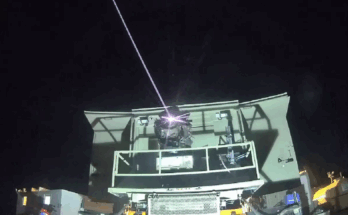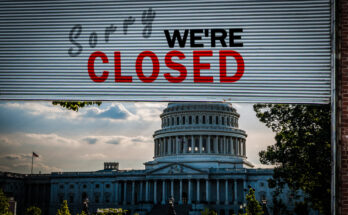
Canada has selected the F-35 to replace its fleet of aging CF-18 Hornet fighters. On March 28, Public Services and Procurement Canada announced the government was entering contract negotiations with the top-ranked bidder, Lockheed Martin, for the procurement of 88 F-35A aircraft. The only other offering left was the Saab Gripen, as Boeing was recently dropped from the program. The competition is technically ongoing, as Canada could still fall back to the Gripen if negotiations with Lockheed fall through for some reason, but that doesn’t seem likely.
This isn’t the first time that Canada has chosen the F-35. More than a decade ago, Canada’s Conservative government, under the leadership of Stephen Harper, announced plans to buy a fleet of 65 F-35s to replace the Hornets. The program became a political target due to rising costs, and the purchase was ultimately scuttled so the government could examine other options.
At the time, when current Prime Minister Justin Trudeau was first running for office, he promised that a government under his leadership would not buy the F-35. Boeing initially appeared to be a clear favorite under Trudeau’s new Liberal government. Ottawa announced a plan in 2016 to buy a number of Super Hornets to serve as interim fighters until a full replacement for the CF-18 fleet could be found. The government said the Super Hornets would fill a newly expressed capability gap that arose from a defense policy change, but the optics made it seem as if the government was merely taking the early steps of locking in a long-term Super Hornet deal. (Ottawa’s first attempt at buying the F-35 started with a target of 80 aircraft, which was later cut back to 65 following a requirements review. Budget issues may have contributed to the reduction as well.)
The Government of Canada has reached a milestone in the competitive process to purchase 88 advanced fighter jets for the @RCAF_ARC. It will now enter into the finalization phase with the top-ranked bidder, the U.S. government and Lockheed Martin. https://t.co/9VLtkBkaQ7 pic.twitter.com/mGRScW2MgI
— Public Services and Procurement Canada (@PSPC_SPAC) March 28, 2022
Canada was in discussions to procure 18 new “interim” Super Hornets under a potential $5.2 billion deal, but the sale fell through over an unrelated trade dispute wherein Boeing claimed the government of Canada was subsidizing Bombardier’s CSeries commercial aircraft. Ottawa scrapped the Super Hornet deal and turned to secondhand F/A-18A/B aircraft from Australia to fill the requirement for interim aircraft. As a follow-up to the trade dispute with Boeing, Canada also amended its future fighter solicitation to penalize any bidder that would harm Canada’s economic interests.
The language Trudeau initially used against the F-35 during his campaign was ultimately walked back, and the competitive process was actually altered to allow Lockheed Martin to stay in the running. Because of the structure of the F-35 consortium (an F-35 development group of which Canada is a member), Lockheed Martin was unable to offer a guaranteed economic benefits package. In other words, if Canada purchased the F-35, Canadian companies would be allowed to compete for work maintaining or upgrading the fleet (as well as F-35s from other nations), but they wouldn’t be guaranteed that work. In comparison, Boeing and Saab offered guaranteed domestic work in their proposals.
Once Boeing was out of the running, the F-35 was generally viewed as the front-runner, in part because the aircraft offered lower interoperability risks for NATO or NORAD missions. Canada’s proximity to the largest F-35 customer in the world could also generate near-term production efficiencies, as well as long-term maintenance benefits that will become increasingly important decades from now when spare parts are needed.

Canada hopes to take delivery of its first aircraft by 2025, compared to 2017 under the Conservative government’s old acquisition schedule. The delayed fielding resulted in Canada spending money to upgrade its existing CF-18s to keep them operational, not to mention the added cost of buying and upgrading the used aircraft from Australia. A government official argued that the competition pushed Lockheed to offer better terms, but details won’t be known until a contract is finalized.
Ottawa’s fighter selection comes at a time when NATO countries are reassessing their national security priorities and investments in the wake of Russia’s invasion of Ukraine. Canada currently falls well below NATO’s target of spending 2 percent of GDP on defense. NATO estimates Canada spends roughly 1.39 percent of GDP on defense, which likely includes a significant amount of spending that falls outside the Department of National Defence. The DND budget alone is equal to around 1 percent of GDP. In recent years, the government has expressed no desire to reach the NATO threshold. More recently, Trudeau has signaled his intent to increase defense spending in light of what is happening in Ukraine, but that doesn’t mean Canada automatically plans to reach the NATO target. Ottawa’s goals will become more clear when a new federal budget is released on April 7.
Shaun's deep-rooted interest in military equipment continues in his role as a senior defense analyst with a focus on the United States. He played an integral role in the development of Forecast International's U.S. Defense Budget Forecast, an interactive online product that tracks Pentagon acquisition programs throughout the congressional budget process. As editor of International Military Markets – North America, Shaun has cultivated a deep understanding of the vast defense markets in the United States and Canada. He is a regular contributor to Forecast International's Defense & Security Monitor blog and has co-authored white papers on global defense spending and various military programs.




